Astoria Highlights--Columbia River Maritime Museum & the Astoria Column
We enjoyed our afternoon excursion, checking out the historical sites in Astoria.
When the rains descended on the Oregon Coast region, we decided to cancel our 7-hour excursion to Mt. Saint Helens and rebook a shorter tour. HISTORIC ASTORIA AND FORT CLATSOP, a 4-hour afternoon tour which was part indoors and part outdoors, was available at short notice, and so we booked it. We are really glad we did—we loved this quirky tour. (I seem to use the word “quirky” a lot when describing things related to Astoria Oregon.)
HIGHLIGHTS inluded:
Browse the exhibits at the Columbia River Maritime Museum.
Learn about Astoria’s early history along the way.
Pause for photos at the landmark Astoria Column.
See a replica of the fort where Lewis and Clark wintered.
“Visit the Columbia River Maritime Museum, located on Astoria's historic waterfront. The museum features nautical artifacts including the Lightship, which served as a floating lighthouse.
The Columbia River Maritime Museum was established in 1962 and first occupied an old city government building. It moved to this site on the Columbia River in 1982. The building is spacious, light and airy. We loved how well the exhibits were displayed and documented.
Our museum guide offered our group a brief introduction to the museum’s mission and then invited us to explore what interested us the most. He remained available for questions throughout our one-hour visit. Very well done!
“There are several ways to identify the year that a label was printed based on lithographic techniques, information on the label, paper, etc. Metallic inks appeared in the early 1890's and lasted through the 1920's with some exceptions. Likewise cans after 1906 were required by law to print the weight on the label. Many labels after the 1920's had the year printed on the inside seam.” — from the museum
I wandered through all of the exhibit halls but focused most on the maritime art. Cannery labels as art? Yep! (Sherpa and I once visited a museum in Stavanger, Norway, that had an exhibit featuring thousands of canning labels. The region’s graphics industry had its roots in those labels.)
"In my work, I have attempted to find the resonance at the mysterious place where the inner and outer realms come together...photography that produces this resonance transports me to a realm that lies beyond the intellect, the abstract, and the analytical." —Robert B. Miller
This oil painting, "Cape Hancock," was created by artist Cleveland Rockwell in 1883. It depicts the mouth of the Columbia River, which has had many names. In 1778, Englishman John Meares referred to it as Cape Disappointment. Captain Robert Gray renamed it to the more positive-sounding Cape Hancock in 1792. However, the locals preferred the original name. Today, it’s often called Cape D.
This mask represents Kumugwe, Kwakwaka'wakw, the ruler of the undersea world, also known as the Copper Maker. This mask was carved by Komox artist Karver Everson. (His clan possesses the rights to the Kumugwe image.)
“The art doesn’t belong to me, it belongs to all of us…every Tlingit, every Tsimshian, every Haida…” —David Boxley, Alaskan Tsimshian
I especially enjoyed studying the exhibits featuring the Indigenous Peoples and their arts.
“Mother Nature will provide for our need, not our greed.” —Nathan P. Jackson, Tlingit
“…the future of our arts and culture are in the hands of capable and productive artists who will keep perfecting their craft.” —Nathan P. Jackson, Tlingit
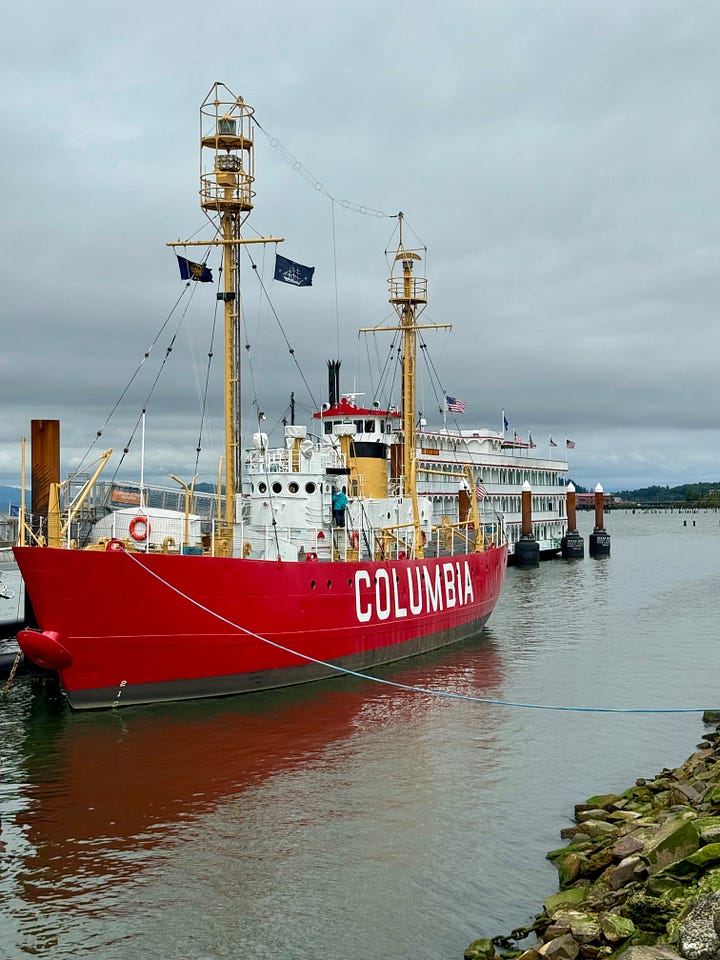
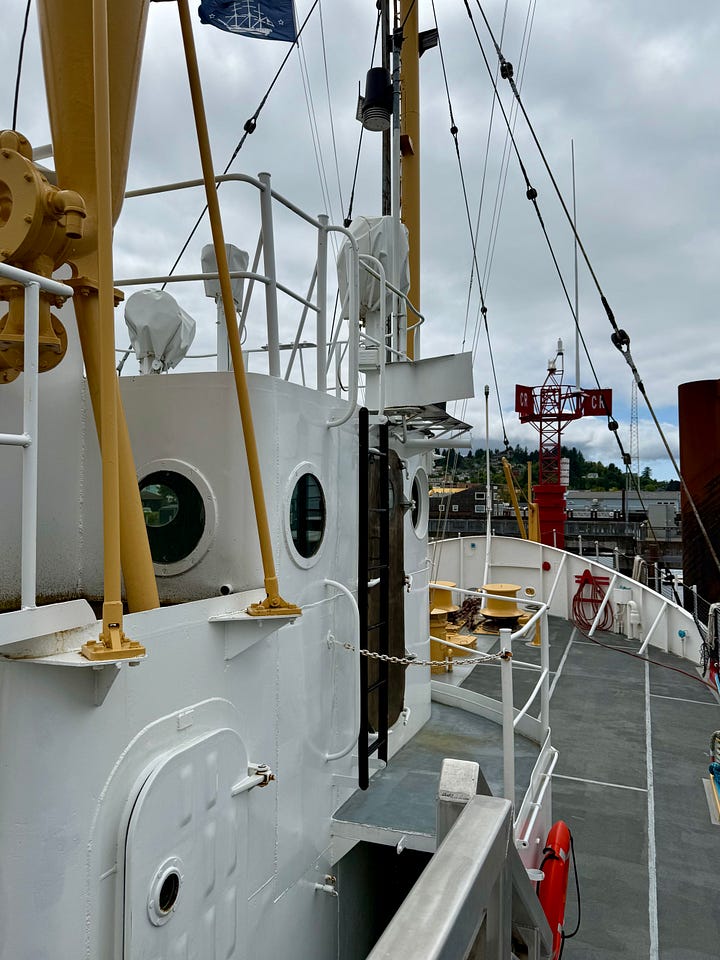
While I was inside looking at the exhibits and maritime-related art, Sherpa took a self-guided boat tour of the Columbia. The Lightship Columbia was the lightship that served as a floating lighthouse at the mouth of the Columbia River from 1951 to 1979. It is a National Historic Landmark.
“Enjoy a scenic drive through Astoria, nestled between the Columbia River and Young’s Bay. You’ll see picturesque Victorian and Queen Anne-style homes and churches.”
We did a quick drive-by this lovely Victorian-styled house, now the Clatsop County Historical Society’s premier property, the Flavel House Museum built for Captain George Flavel in 1885. If there had been more time—or if we had skipped our morning stop at the Astoria Brewing Co.—we would have loved to visit this beautiful home and museum.
“Then stop at the Astoria Column, built in 1926. This 125-foot-tall concrete and steel structure features a cast-iron staircase with 164 steps leading to an observation deck.”
After our Maritime Museum visit, our tour bus crawled up Coxcomb Hill and stopped at the Astoria Column, a monument dedicated to the people who completed the Great Northern Railway in 1926. We had 45 minutes to explore the tower, the scenic lookout, and a small gift shop, an adequate amount of time.
The 125-foot-tall Astoria Column is constructed of concrete. At its core is a spiral staircase made of galvanized steel. New York architect Electus Litchfield and artist Attilio Pusterla developed a plan in 1925 to create a column with a sgraffito-etched history that spanned from the discovery of the Columbia River to the arrival of the railroad.
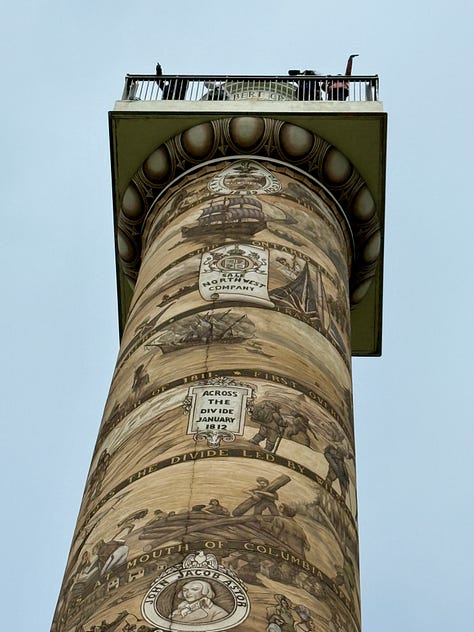
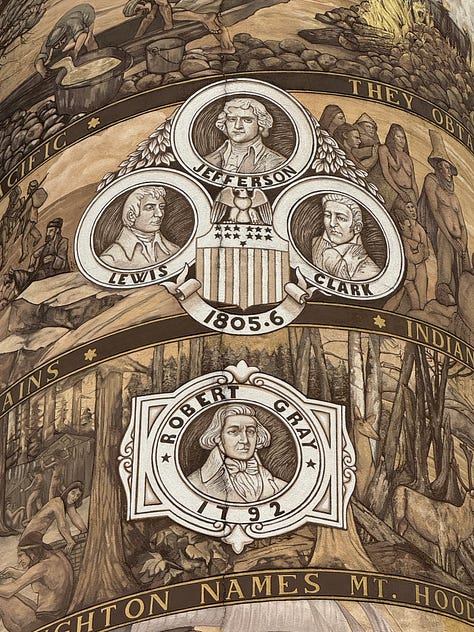

It features a unique artistic technique known as sgraffito, an ancient Italian art form that involves applying layers of different colors of wet plaster and then cutting through the top layers to reveal the contrasting color beneath.
In 1961, this memorial honoring the Chinook Indians was dedicated at the Astoria Column site. A replica of Chief Comcomly’s burial canoe faces west, in keeping with Chinook custom.
What a view from the top of the hill near the Astoria Column! Look at the Astoria-Megler Bridge spanning the Columbia River, a 4-mile-long cantilever bridge that connects Washington and Oregon.
Sherpa is “leaning on Oregon” as he celebrates his big achievement—visiting all 50 United States. Oregon was Number 50!
Next stop (and next post): Continue to the Lewis and Clark National Historical Park for a tour of Fort Clatsop.”




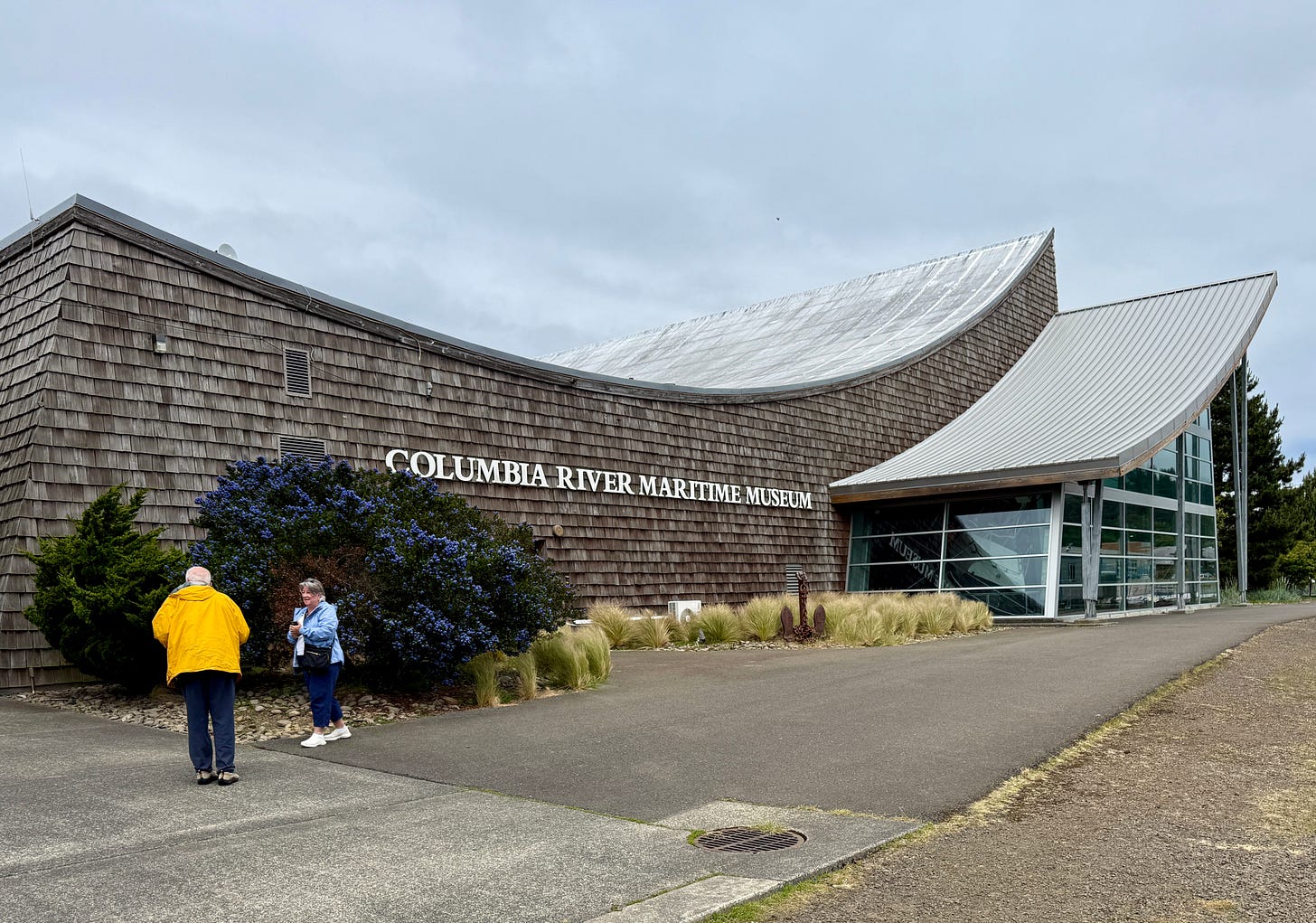
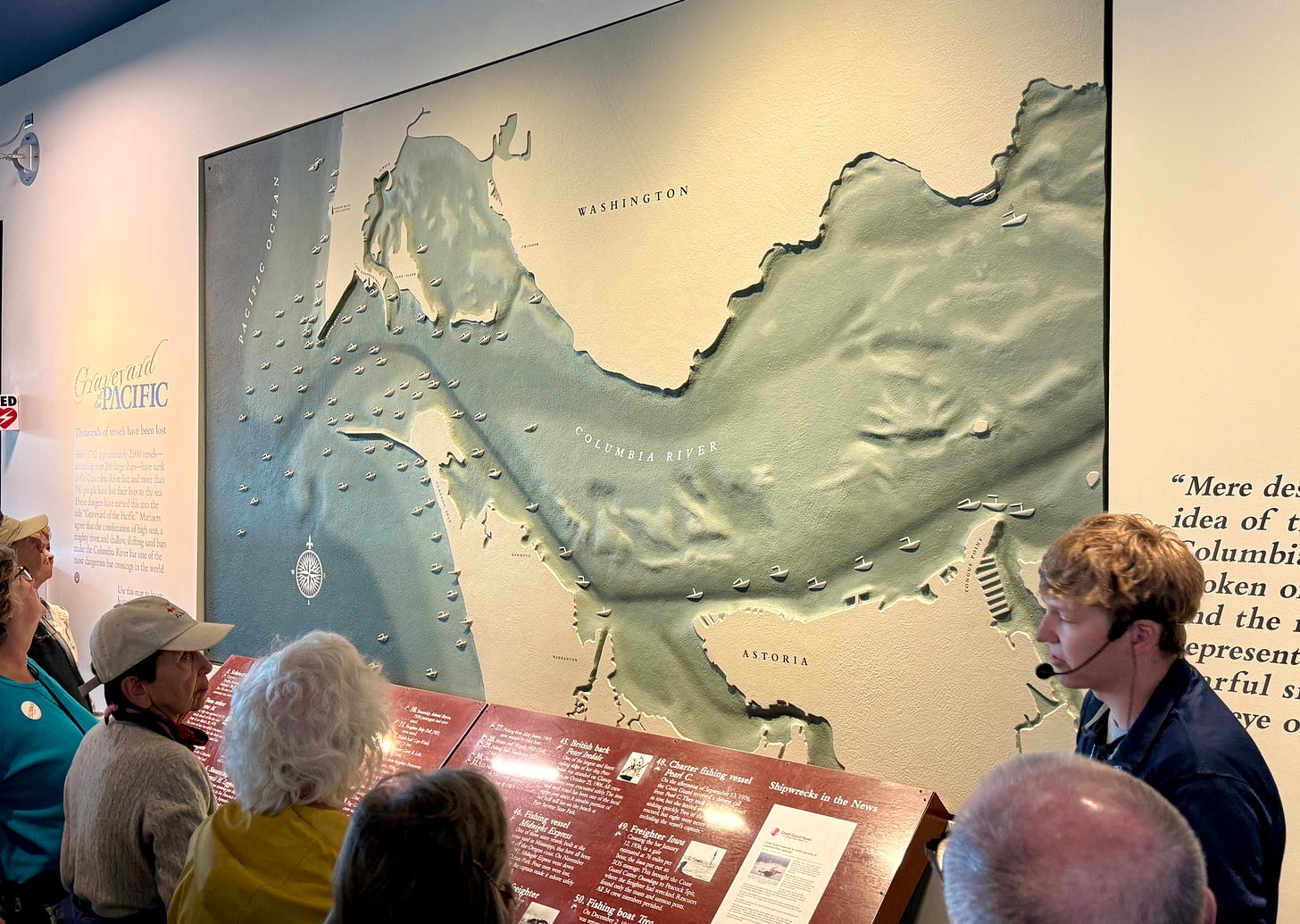

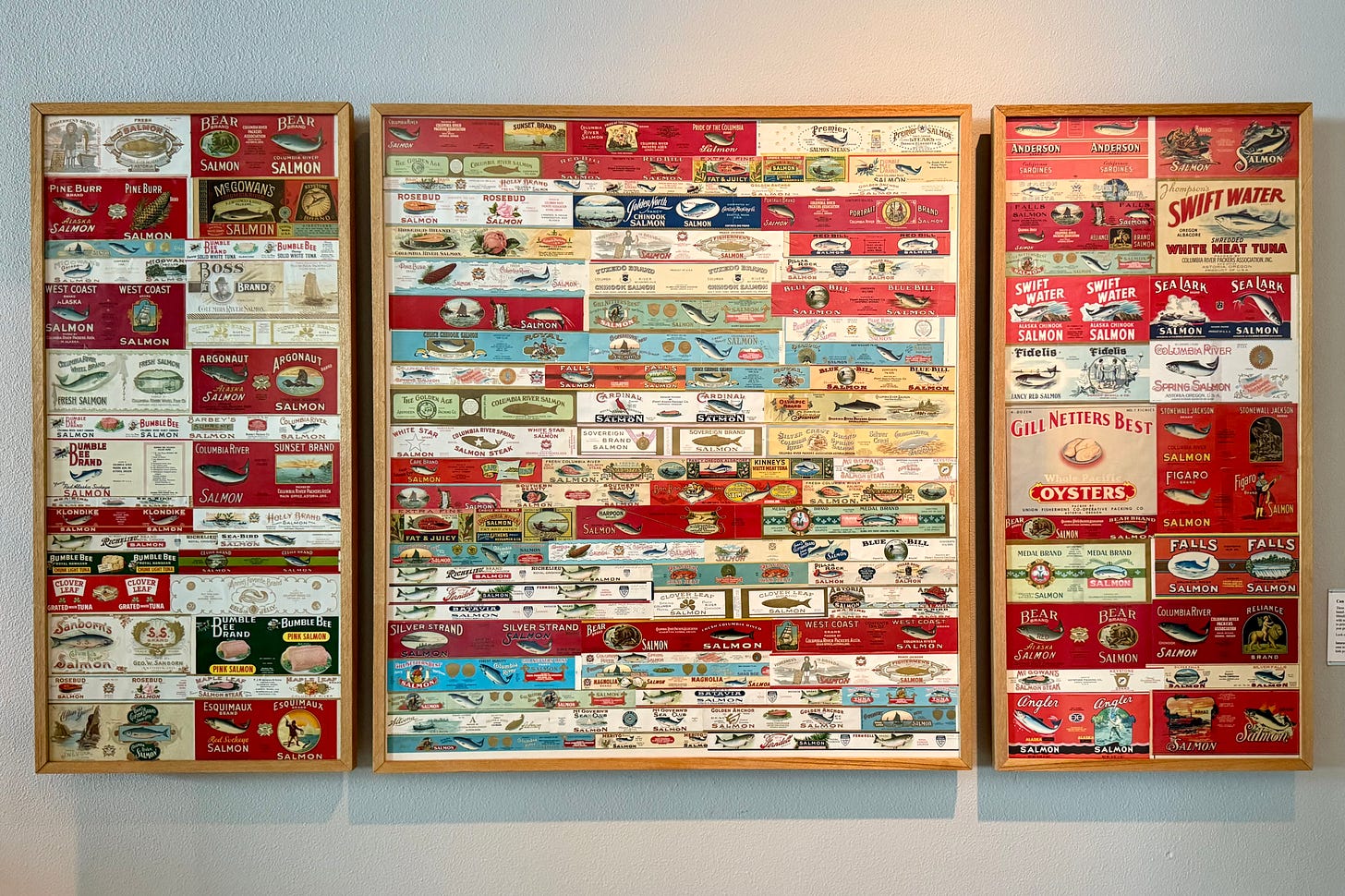

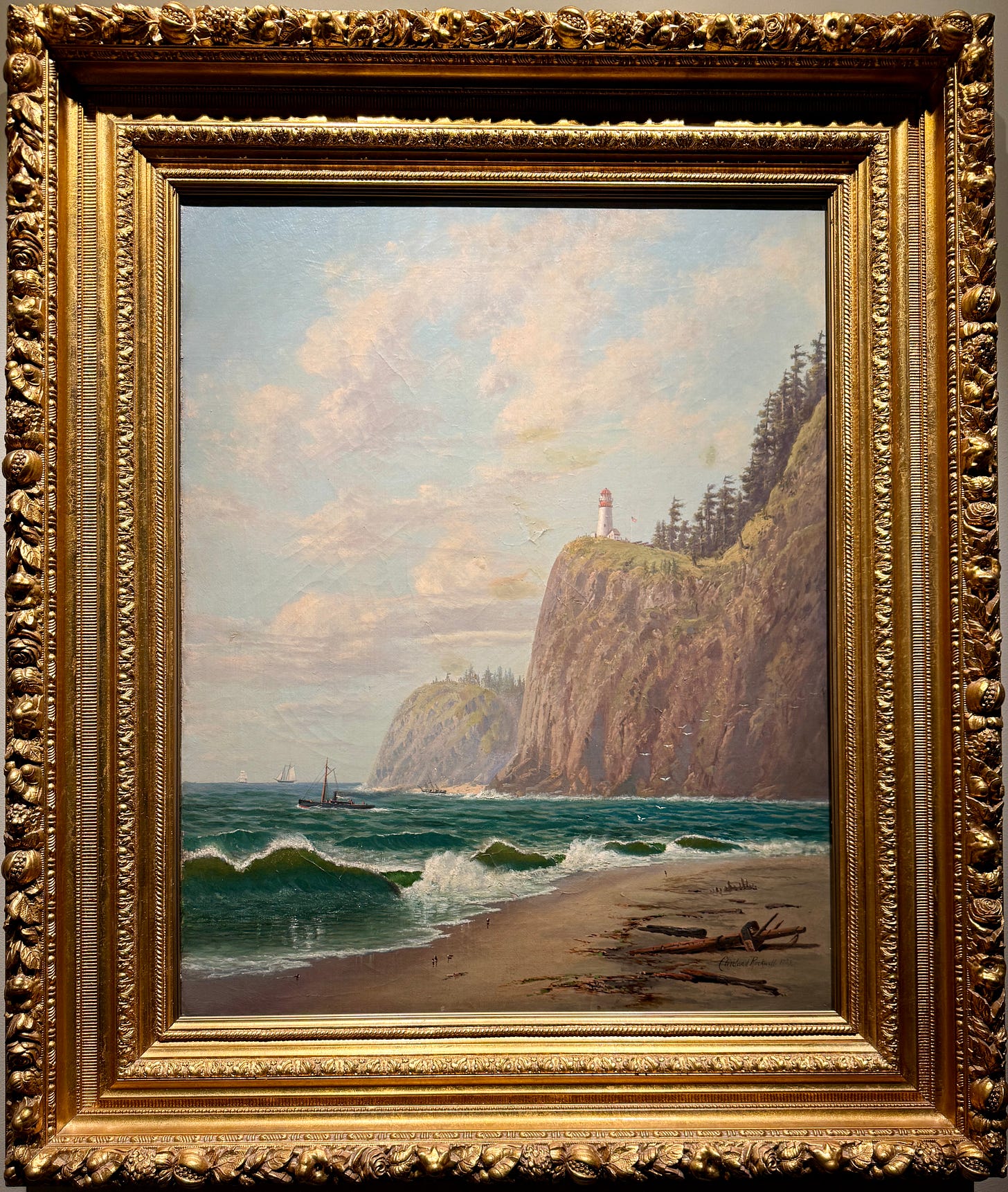
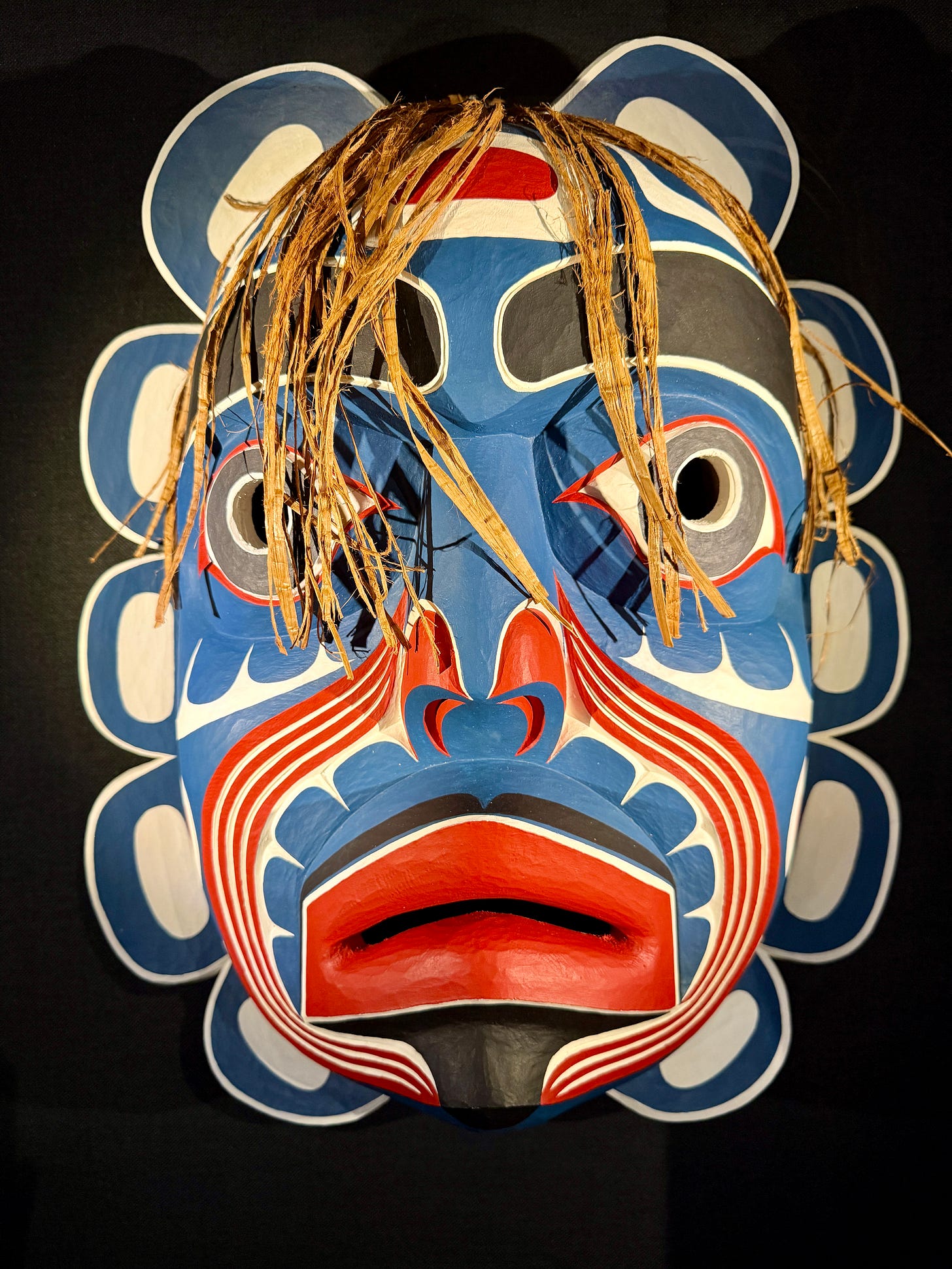
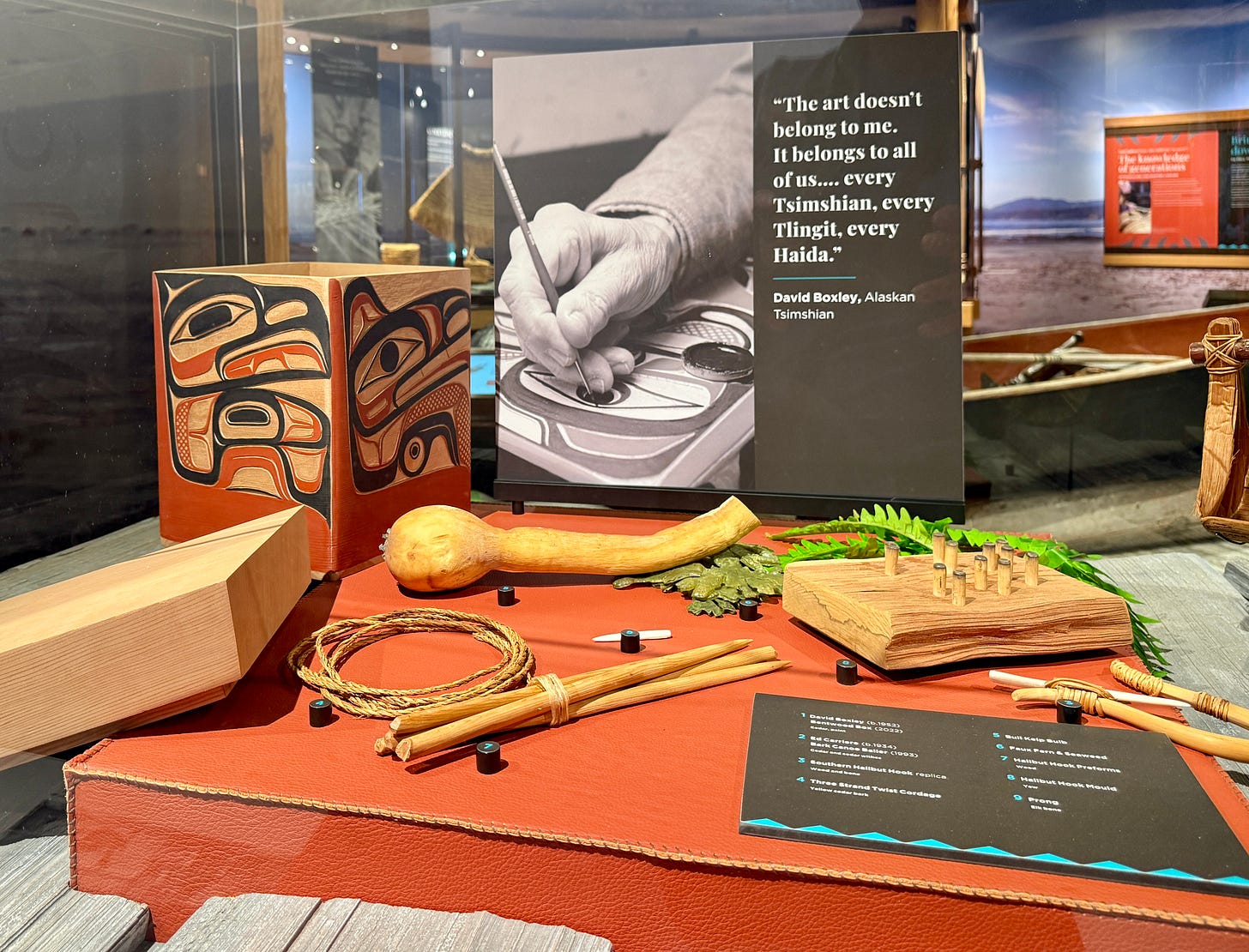
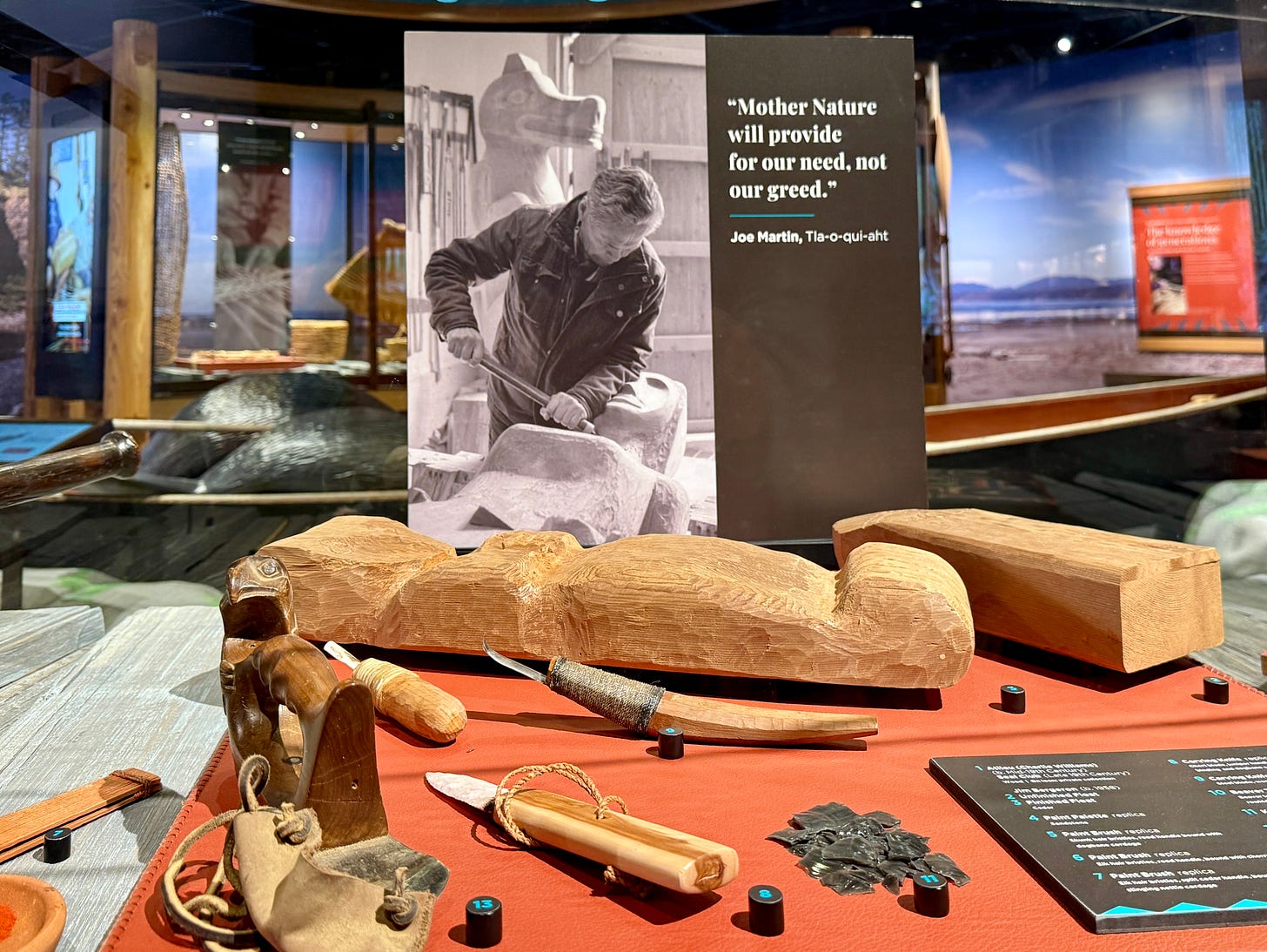
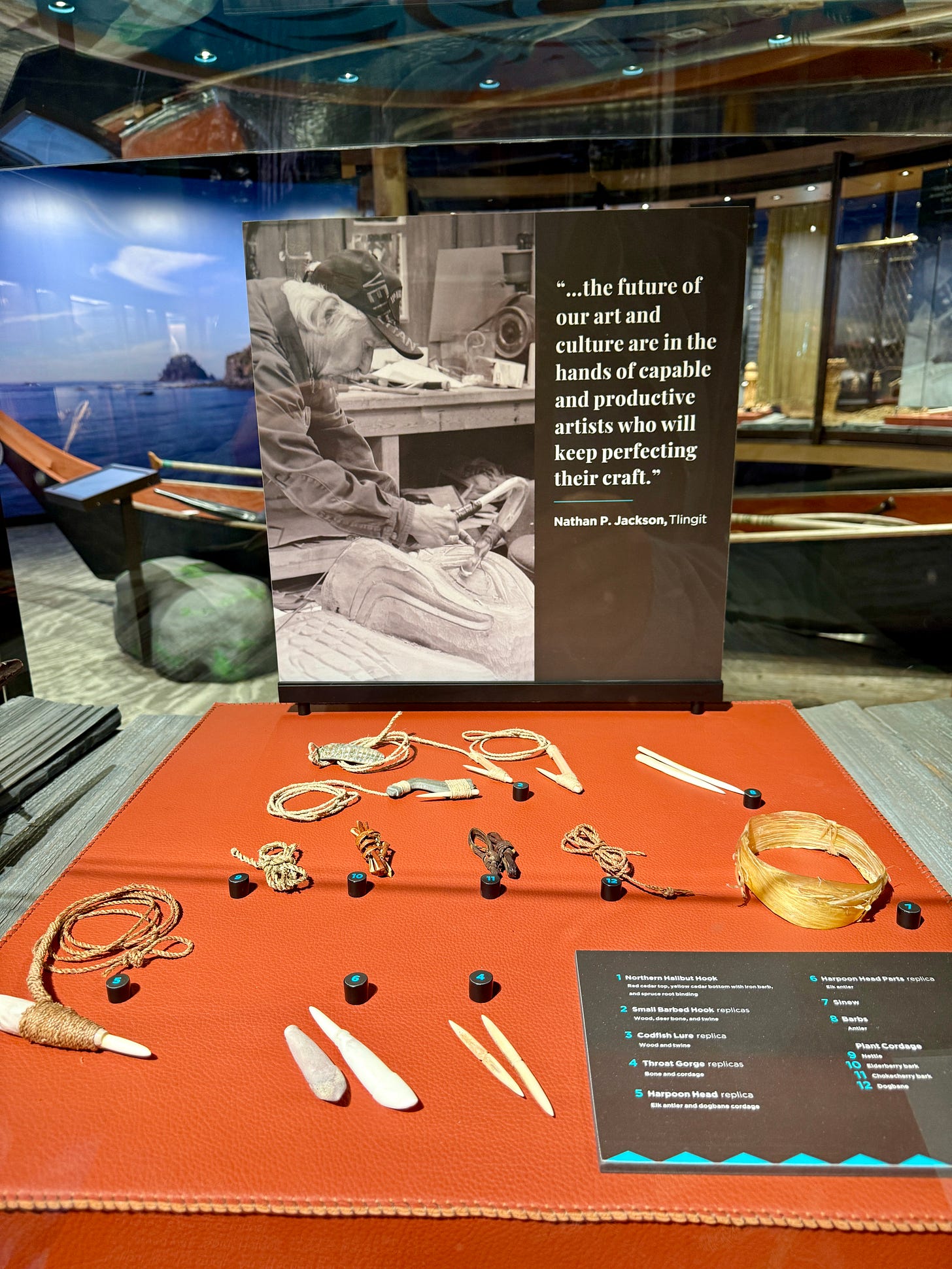
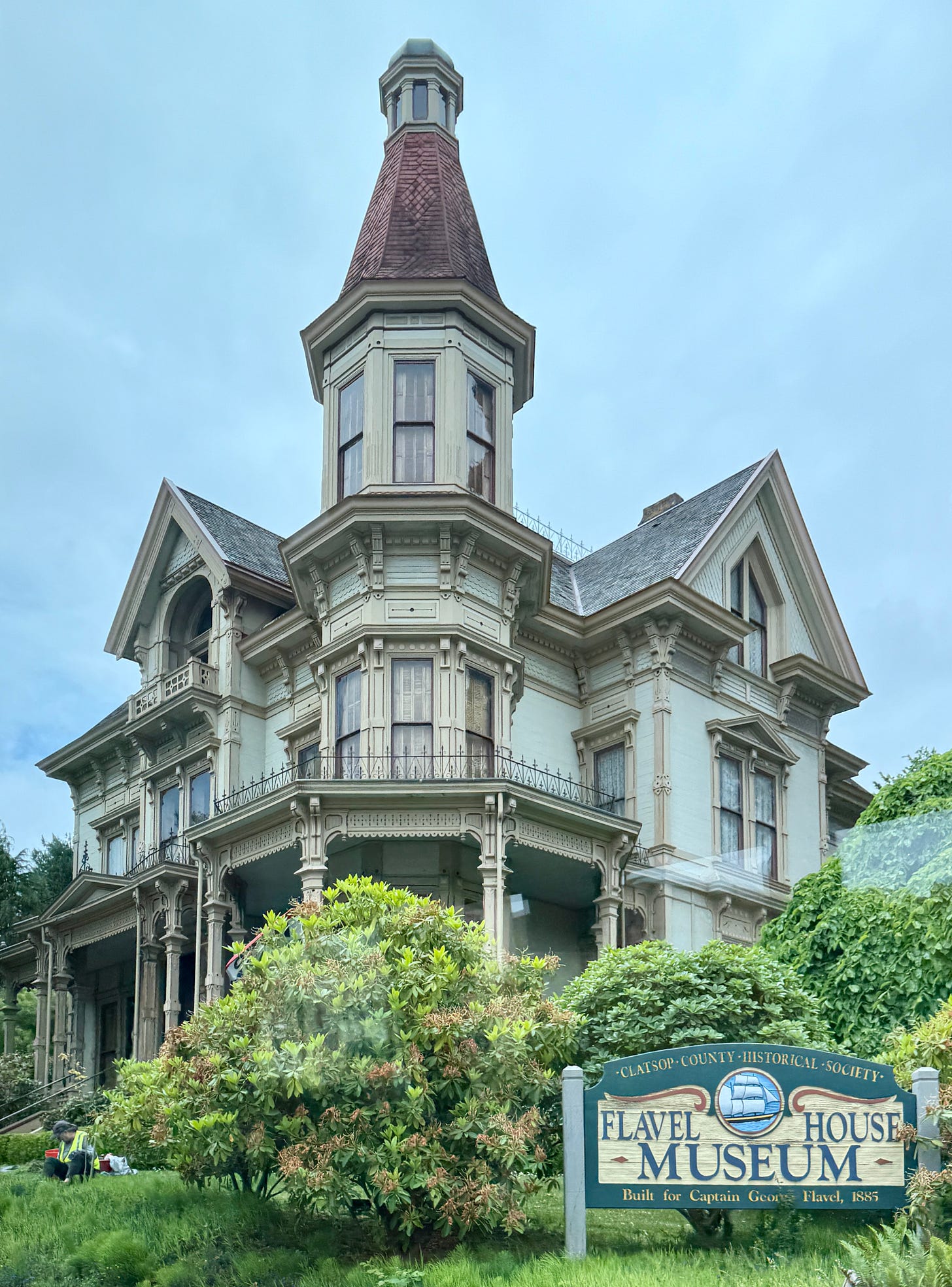
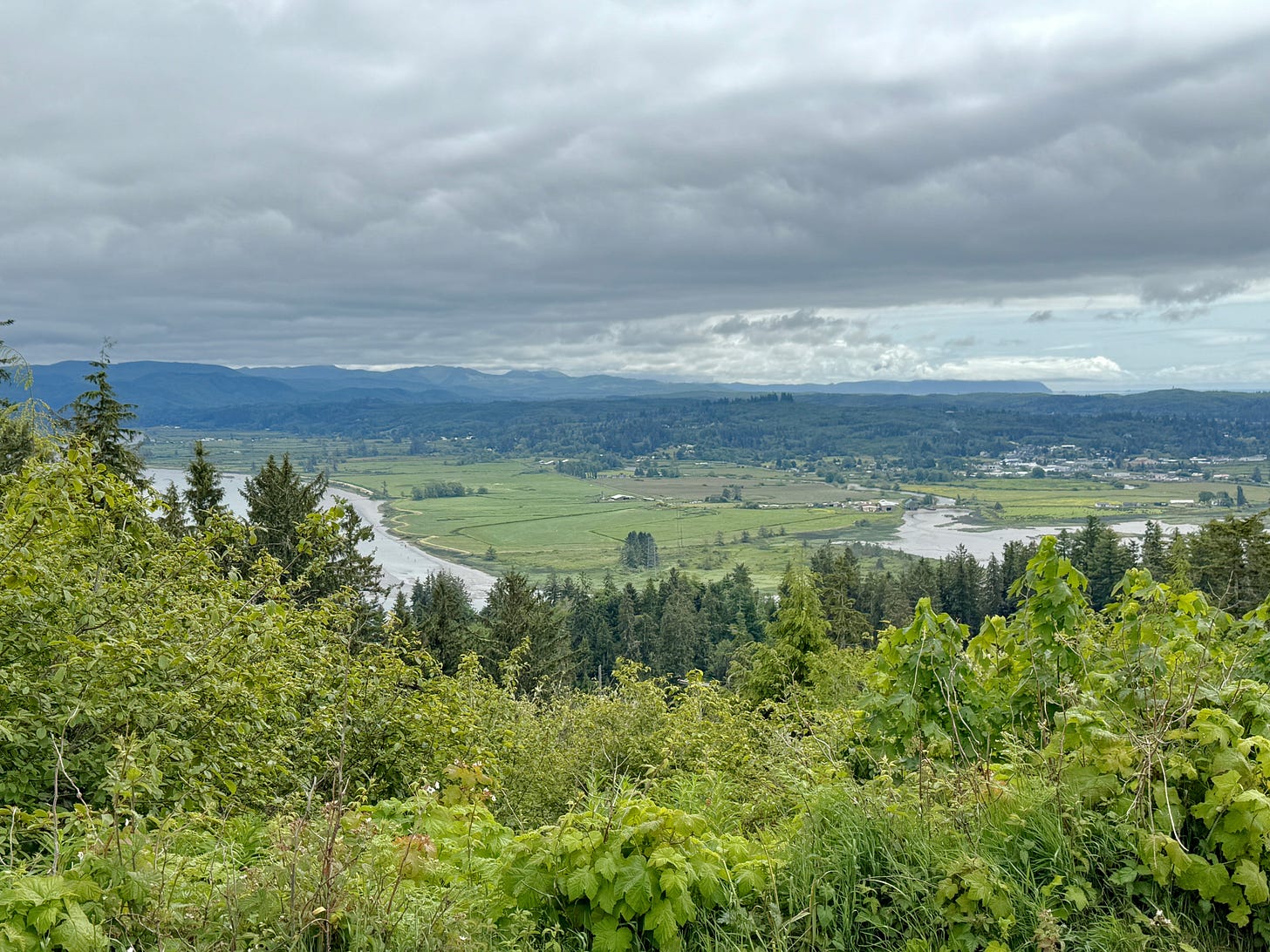
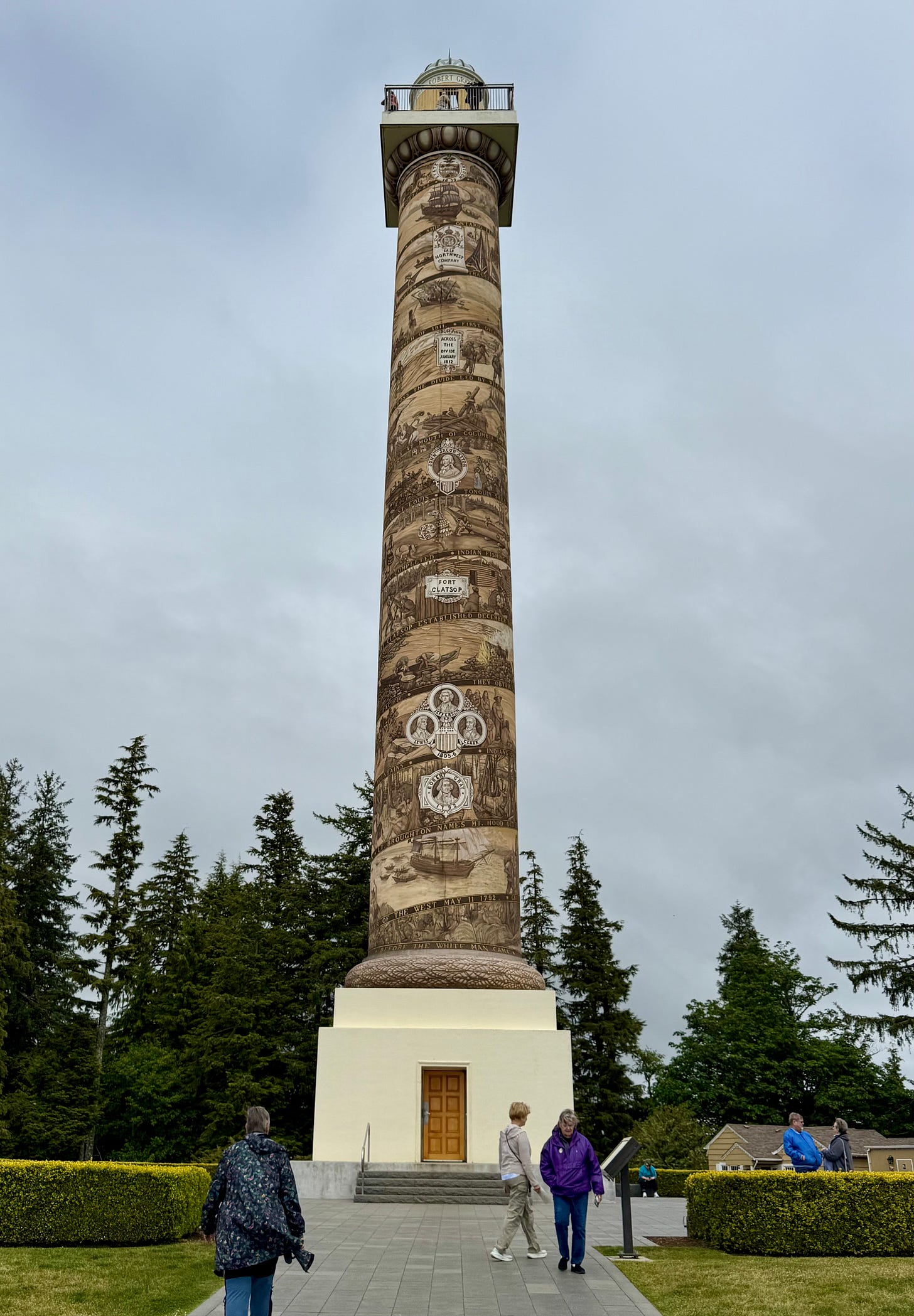
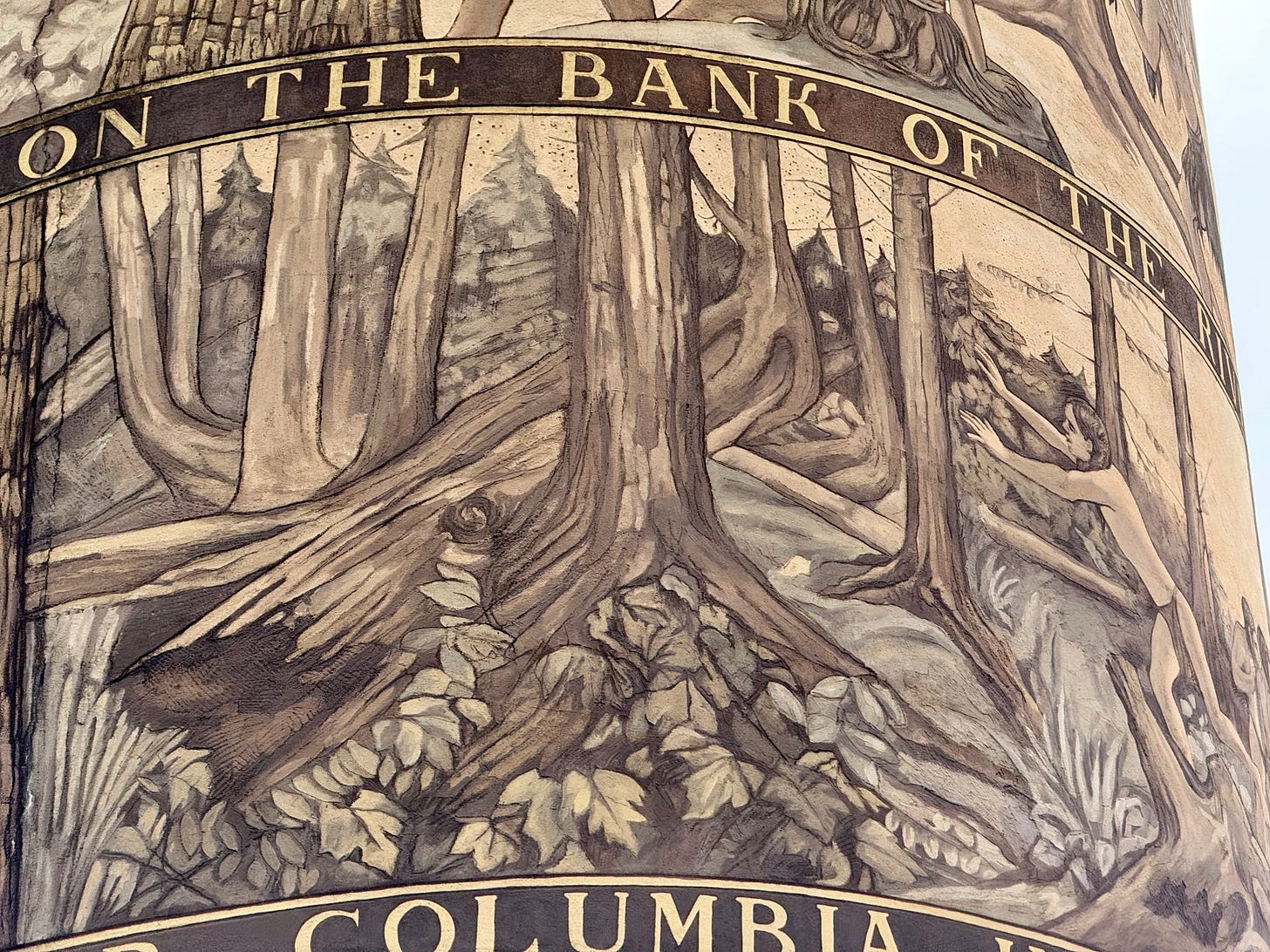
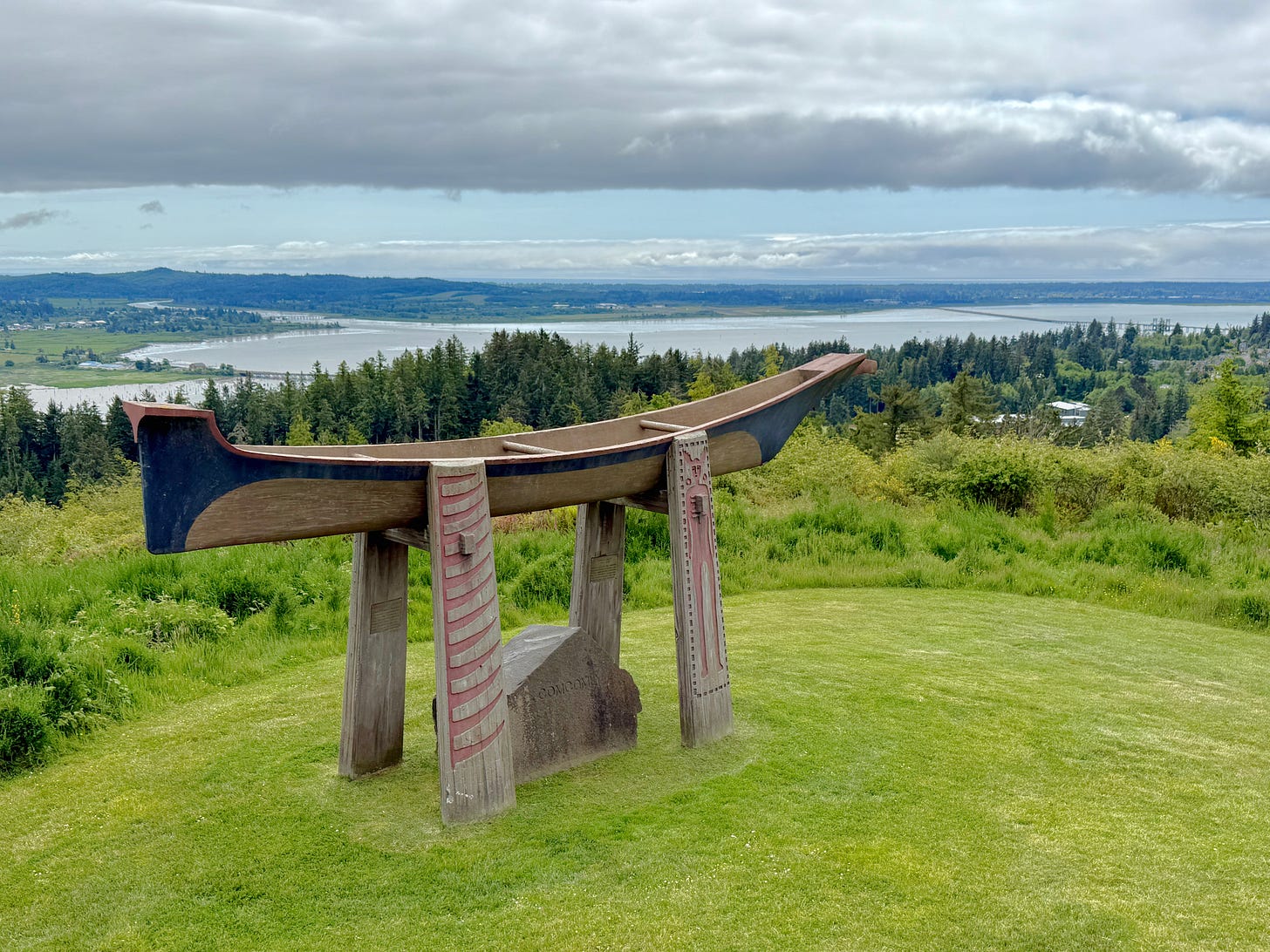
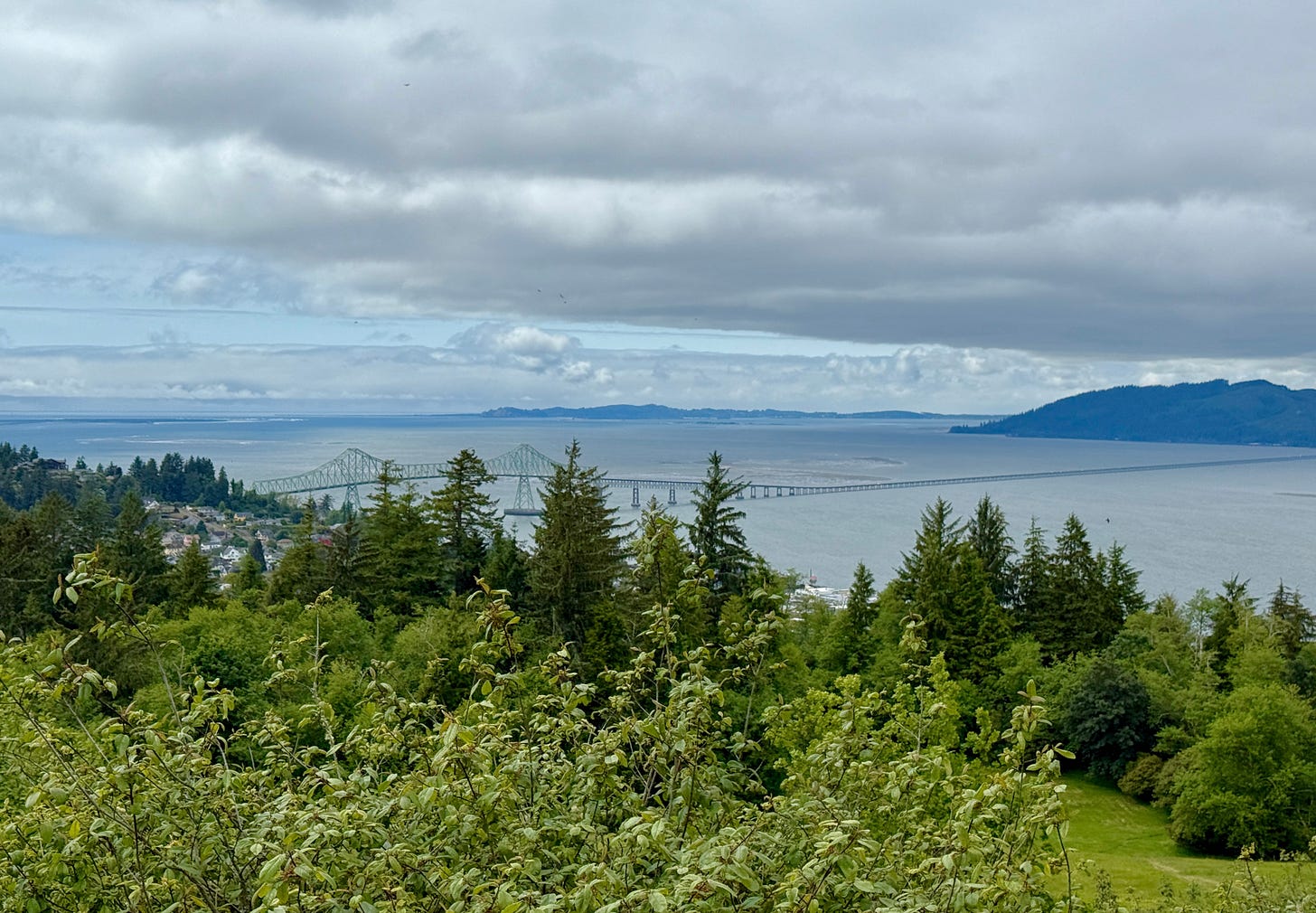

Congratulations to Sherpa!
Like another awesome day! Always fun to learn! I will say I am envious of the beautiful Victorian and Queen Anne style homes. I always find something very charming about those styles.